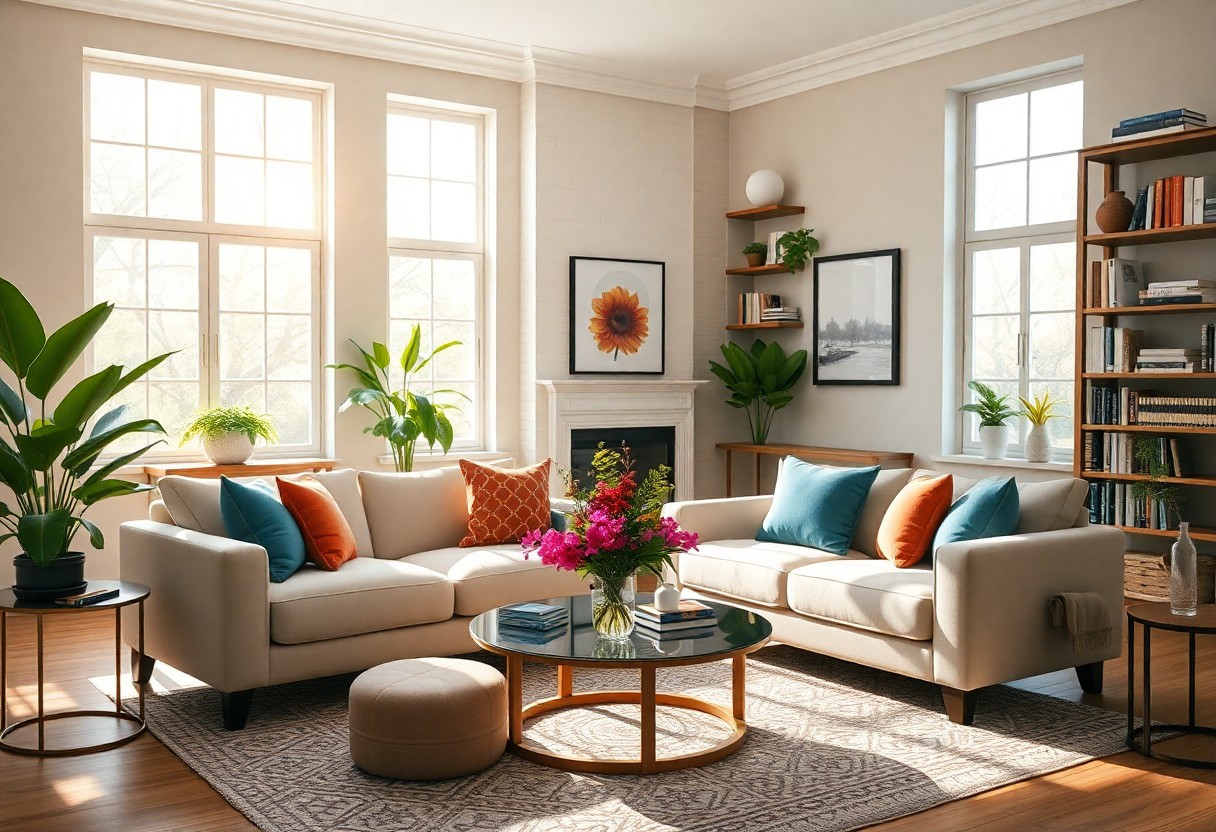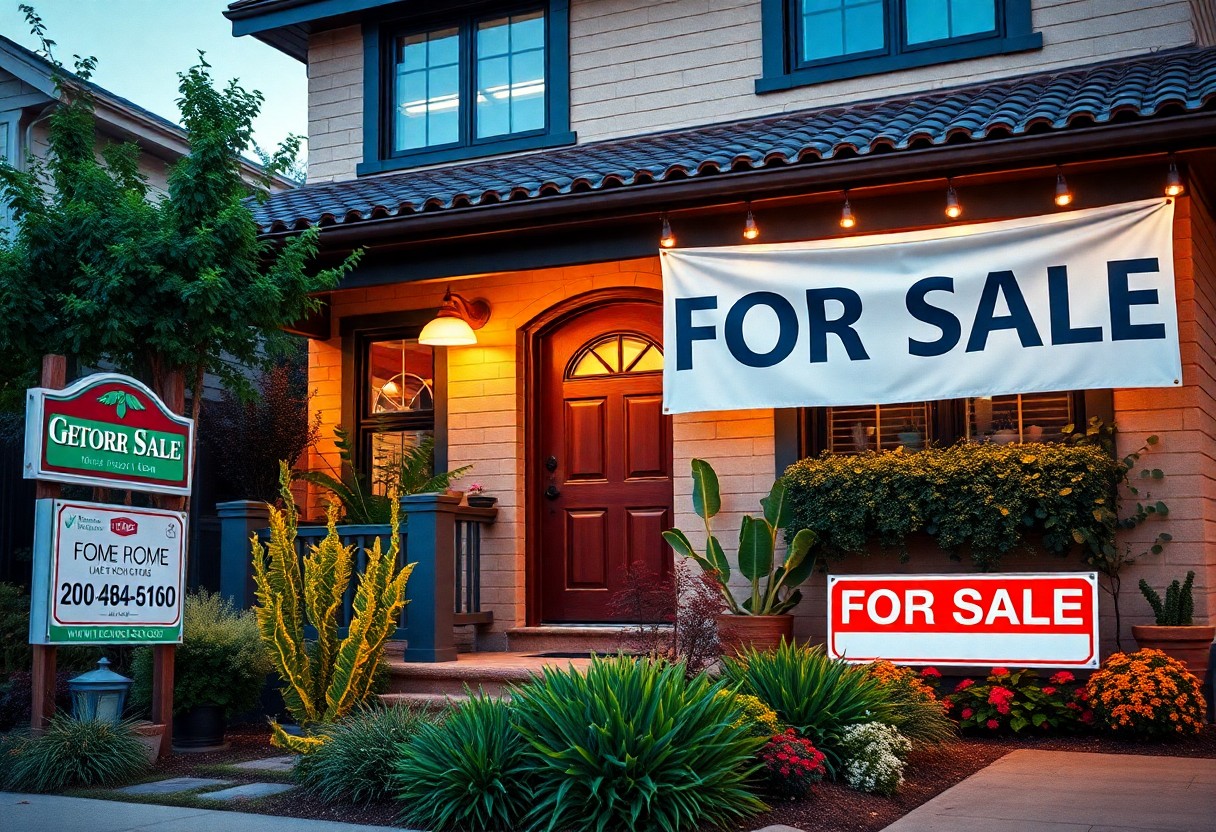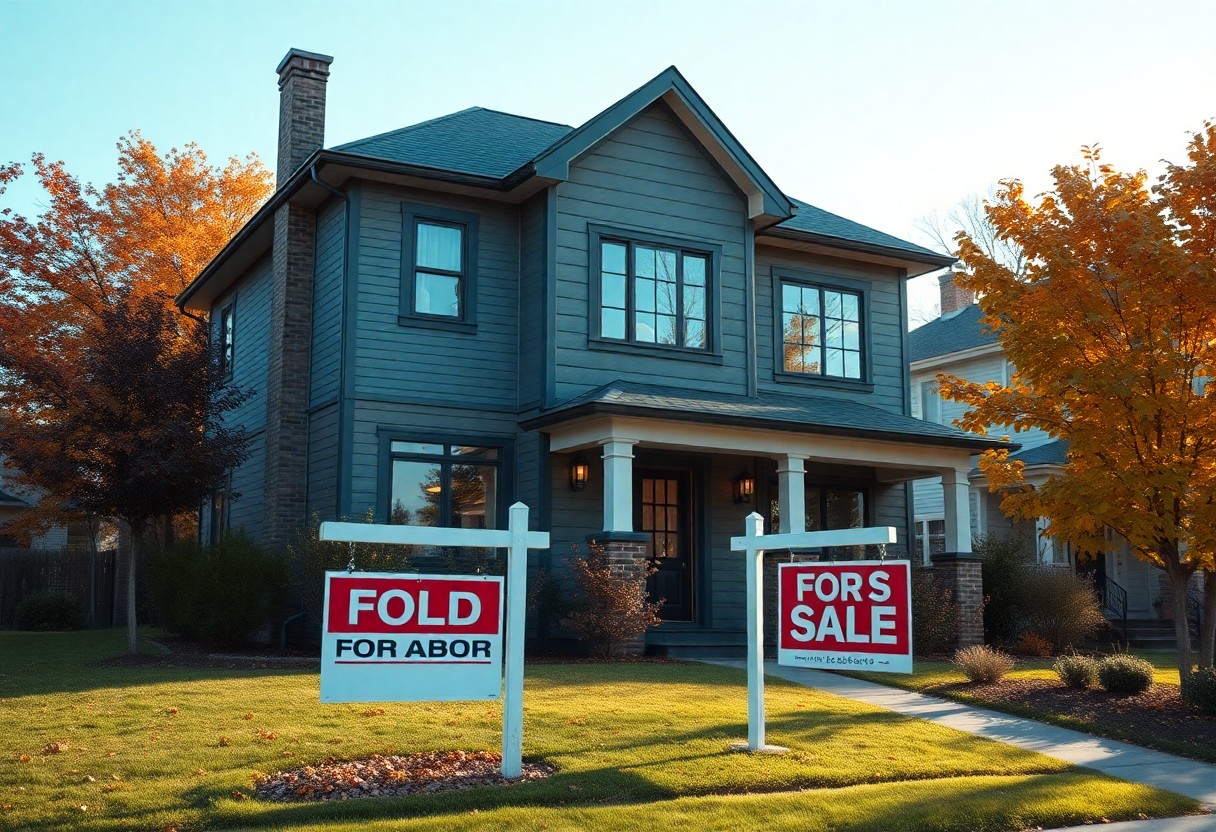Many sellers underestimate the power of effective home staging when it comes to attracting buyers. By transforming your space into an inviting and appealing environment, you can significantly increase your chances of a speedy sale. This guide will provide you with crucial tips to showcase your home’s best features and create a connection with potential buyers. From decluttering to strategic lighting choices, these practices will make your home irresistible. Let’s probe into the key techniques that can elevate your selling game and ensure your property stands out in the competitive market.
Key Takeaways:
- Declutter and depersonalize your space to create a neutral environment that allows buyers to envision their own belongings in the home.
- Enhance curb appeal by maintaining the exterior, including landscaping, fresh paint, and a clean entrance, to create a welcoming first impression.
- Use strategic furniture placement to maximize space and highlight the flow of each room, making sure pathways are clear and inviting.
- Incorporate neutral colors on walls and decor to appeal to a wider audience, allowing potential buyers to see the home as a blank canvas.
- Ensure the home is bright and inviting by using natural light, choosing adequate lighting fixtures, and incorporating mirrors to create a more open feel.
- Make necessary repairs and updates, such as fixing leaks or squeaky doors, to demonstrate that the home has been well-maintained and cared for.
- Add finishing touches with tasteful accessories, such as fresh flowers, neatly arranged towels, and art, to create an inviting atmosphere that highlights the home’s selling points.
Understanding the Importance of Home Staging
While preparing to sell your home, understanding the significance of home staging can greatly enhance your success. Staging highlights your property’s best features, creating an inviting atmosphere that resonates with potential buyers. A well-staged home not only attracts more attention but can also lead to faster sales and higher offers, ensuring you achieve the best possible outcome.
Why Staging Matters for Selling
Assuming you want to maximize your selling potential, staging should be a top priority. A thoughtfully designed space allows buyers to visualize themselves living there, which can be the deciding factor in their purchasing decision. Additionally, staged homes often sell for higher prices compared to their unstaged counterparts.
Psychological Factors That Influence Buyers
If you want to make a lasting impression on buyers, it’s imperative to address the psychological factors at play during their home search. Key elements like lighting, space perception, and emotional engagement significantly impact a buyer’s impression of the home. Highlighting your home’s best aspects can evoke positive feelings that lead to a sale.
- Lighting: Bright, well-lit spaces feel inviting.
- Neutral colors: These allow buyers to envision their style.
- De-personalization: This helps buyers see the home as theirs.
Perceiving your home as a welcoming haven is key.
To optimize your home’s appeal, consider the specific psychological factors that may resonate with buyers. Additionally, staging your home can enhance features like outdoor spaces and open floor plans, which create a sense of freedom and relaxation. Furthermore, leveraging aromas and tasteful decor can trigger positive associations, making your property memorable.
- Outdoor spaces: Create a relaxing oasis.
- Open floor plans: Enhance movement between areas.
- Aromas: Scent evokes comfort and home.
Perceiving these factors can transform your sale experience.
1. Declutter and Depersonalize: Remove personal items and excess belongings.
2. Clean Thoroughly: Deep clean every room, including windows and surfaces.
3. Neutral Colors: Paint walls in soft, neutral tones for appeal.
4. Arrange Furniture: Optimize space and create inviting conversation areas.
5. Add Fresh Décor: Use tasteful accents, plants, and art to enhance.
6. Good Lighting: Maximize natural light and use warm bulbs.
Preparing Your Home for Staging
If you want to make a lasting impression on potential buyers, preparing your home for staging is important. This process involves creating an inviting atmosphere that highlights the best aspects of your home while allowing buyers to envision themselves living there. By taking the time to prepare, you can significantly increase your home’s appeal and potentially secure a quicker sale at a better price.
Decluttering and Depersonalizing
Depersonalizing your spaces allows buyers to envision their own lives in your home. Start by removing personal items, such as family photos and memorabilia, which can distract potential buyers. Aim to create a neutral environment with fewer belongings to demonstrate the home’s potential, making it easier for buyers to imagine their own furniture and decor.
Cleaning and Repairs
Home maintenance should be a top priority during the staging process. Address any minor repairs, such as fixing leaky faucets and squeaky doors, as these issues can negatively impact a buyer’s perception of your property. A thorough cleaning is also important to remove dust and grime, ensuring your home looks its best.
With a focus on cleaning, every corner of your home should shine. Deep clean carpets, wash windows, and scrub surfaces to create a pristine environment. Additionally, taking care of repairs like patching holes in walls or dealing with plumbing issues showcases your home’s well-maintained condition. These steps create a positive impression on potential buyers, making them more likely to envision themselves in your clean and well-cared-for space.
Creating an Inviting Atmosphere
Now that you’re gearing up to sell your home, it’s imperative to create an inviting atmosphere that resonates with potential buyers. Begin by decluttering your space and adding cozy touches, such as fresh flowers or soft throws. You can check out 15 Home-Staging Tips to Sell Your House Fast for more inspiration. Focus on making each room feel welcoming and warm to capture hearts and showcase the potential of your home.
Utilizing Lighting Effectively
Clearly, lighting plays a significant role in creating an inviting atmosphere. You should maximize natural light by opening curtains and blinds, while strategically placing lamps and light fixtures in darker areas. Soft, warm lighting can make your home feel cozy and welcoming, enticing buyers to imagine themselves in the space.
Choosing the Right Color Schemes
Utilizing the right color schemes in your home staging can dramatically impact buyers’ perceptions. Opt for neutral tones such as beiges, grays, and soft whites to create a clean slate, making it easier for potential buyers to envision their personal touches. Additionally, don’t hesitate to add pops of color through accessories like cushions or artwork, as they can evoke emotion and enhance visual appeal. With a balanced color palette, you can provide a harmonious backdrop that highlights the best features of your home and invites buyers to connect with the space.

Furniture Arrangement Tricks
Keep your layout open and inviting by ensuring the flow of your space is unimpeded. Position furniture to create conversation areas, allowing for comfortable movement and accessibility. Consider utilizing multifunctional pieces to maintain a cohesive look while keeping your home feeling spacious. Aim for a balance that draws attention to your home’s best attributes, making it easier for potential buyers to envision their own lives within your space.
Maximizing Space and Flow
Clearly, creating an open and accessible layout is important when staging your home. Arrange larger furniture pieces away from entryways and paths, which enhances visibility and movement. Aim for a layout that feels airy while still providing intimate gathering spaces. Use rugs to define areas and guide foot traffic, ensuring your home feels both spacious and functional.
Highlighting Key Features
Tricks to accentuate your home’s key features can make a significant difference in attracting buyers. Aim to showcase unique attributes that set your home apart. Here’s a list of important features to highlight:
- Natural light – Maximize window treatments for brightness
- Architectural details – Emphasize moldings and finishes
- Outdoor spaces – Create a welcoming patio or garden
- Open concepts – Use furniture to define spaces without blocking flow
- Functional layouts – Position furniture to enhance usability
Recognizing these features can significantly impact the perception of your home, making it memorable for potential buyers.
Understanding how to draw attention to these features can elevate your staging efforts. In particular, consider rearranging furniture to frame architectural details, making them stand out. Additionally, ensure that each highlighted aspect of your home feels balanced and harmonious within the overall arrangement. Items such as artwork, lighting, and comfortable seating can attractively frame the features of your home, creating a cohesive and inviting atmosphere for potential buyers. Recognizing these adjustments can elevate your home’s appeal, paving the way for a quicker sale.
Adding the Finishing Touches
After you’ve completed the important staging tasks, it’s time to focus on the details that can elevate your home’s appeal. These finishing touches create a sense of warmth and make your property feel inviting. Simple enhancements, such as carefully placing a few key accessories, can transform a house into a place that potential buyers can envision as their new home.
Incorporating Accessories and Decor
With the right accessories and decor, you can personalize each room and highlight your home’s best features. Consider adding a few tasteful throw pillows, soft blankets, and stylish art pieces to create cozy environments that resonate with buyers. Keep your color palette neutral and ensure that everything feels cohesive to attract a wider audience.
Curb Appeal Enhancements
Assuming that first impressions matter, enhancing your home’s curb appeal is vital for attracting buyers. The exterior is the first thing potential buyers see, so make sure it looks inviting and well-maintained. Don’t overlook the importance of landscaping, fresh paint, and a tidy entrance, as these elements can significantly impact how buyers perceive your property.
For instance, adding colorful flowers in well-maintained flower beds, trimming hedges, and ensuring your lawn is manicured can create an engaging entrance. A fresh coat of paint on your front door can also make a striking statement and invite buyers in. Consider upgrading your house numbers and lighting fixtures for a more polished look. These small enhancements can transform your home’s exterior, making it more appealing and encouraging prospective buyers to imagine themselves living there.

Tips for Virtual Staging
Not all homes need traditional staging, and you can effectively use virtual staging to enhance your space. Here are some helpful pointers:
- Choose the right photographs that highlight your property’s best features.
- Utilize professional virtual staging services to create realistic designs.
- Ensure that the virtual furniture complements your home’s aesthetic.
- Be transparent about the use of virtual staging in your listings.
After following these tips, you can attract more potential buyers with a stunning visual presentation.
Digital Tools and Techniques
On your journey to virtual staging, harness powerful digital tools that simplify the process. Software like SketchUp or Photoshop allows you to add realistic furniture and decor to your photos. Utilize online platforms that specialize in virtual staging, offering a variety of design templates tailored to your home’s style. The goal is to create inviting spaces that resonate with your target audience while showcasing the unique potential of your property.
When to Consider Virtual Staging
Consider utilizing virtual staging when your home is vacant or lacks appeal. It can also be beneficial if you’re facing time constraints or budget limitations for traditional staging. This approach offers flexibility, allowing you to showcase each room’s potential without the expense and effort of physically moving furniture.
It is vital to understand that virtual staging can significantly enhance your home’s appeal by creating a welcoming environment. This method mitigates the risk of your property sitting on the market for too long. By presenting visually engaging images, you can attract a wider audience. However, ensure that the virtual staging remains true to your space to avoid misleading potential buyers and to maintain trust in your listing.
Conclusion
To wrap up, staging your home effectively can significantly enhance its appeal to potential buyers. By focusing on decluttering, highlighting your home’s best features, and creating an inviting atmosphere, you can make a lasting impression. Use neutral colors, arrange furniture strategically, and pay attention to curb appeal to attract more viewers. With these tips, you can present your property in the best light and increase your chances of a successful sale.
FAQ
Q: What is home staging and why is it important for sellers?
A: Home staging is the process of preparing a home for sale in the real estate market. This involves decluttering, rearranging furniture, and adding decor to make the space more appealing to potential buyers. Proper staging can highlight the home’s best features, create inviting atmospheres, and help buyers visualize themselves living in the space, ultimately leading to a quicker sale at a potentially higher price.
Q: How do I start staging my home effectively?
A: Begin by decluttering each room. Remove personal items, excess furniture, and anything that can distract potential buyers. After decluttering, clean each space thoroughly. Consider rearranging furniture to maximize space and flow. Finally, add finishing touches, such as fresh flowers, tasteful art pieces, and neutral color palettes to make each room feel welcoming.
Q: Should I hire a professional stager or do it myself?
A: The decision to hire a professional stager or stage the home yourself depends on your budget and confidence in your design skills. Professional stagers have expertise and access to furniture and decor that may elevate the appeal of your home significantly. On the other hand, if you have a good eye and budget constraints, staging your home yourself can be a rewarding experience and still yield great results.
Q: How can I use lighting to enhance my home staging?
A: Lighting plays a vital role in creating an inviting ambiance. Ensure all lights are in working order and replace any burnt-out bulbs with bright, warm white light. Use a combination of natural and artificial light to make spaces feel airy and open. Soft lamps or strategically placed fixtures can add warmth, while bright overhead lights can help illuminate darker areas.
Q: What are some key rooms to focus on when staging my home?
A: The most important rooms to stage are the living room, kitchen, and master bedroom. These spaces often have the greatest impact on potential buyers. The living room should be warm and inviting, the kitchen must look clean and functional, and the master bedroom should feel like a serene retreat. Don’t overlook bathrooms, as well, which should convey cleanliness and spaciousness.
Q: How can I maintain a buyer’s interest during open houses or showings?
A: During open houses or showings, ensure the home is clean and free of clutter. Keep windows open to allow fresh air in and light to brighten the space. A pleasant aroma, like fresh baked goods or light candles, can also enhance the overall experience. Be open to flexibility with showing times, and keep the house at a comfortable temperature to create a welcoming environment.
Q: Are there any specific design trends I should consider for staging my home?
A: Current design trends lean towards minimalism, neutral color palettes, and natural materials. Select furniture that is modern yet timeless, and ensure that decor feels cohesive throughout the home. Simple touches, such as adding greenery or stylish textiles, can bring warmth without overwhelming the space. Keeping the design inviting but not overly personalized caters to various buyer preferences.



